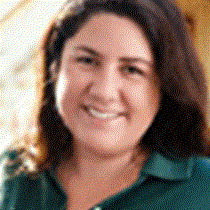San Salvador is an island close to our hearts; since 1997 Lindblad Expeditions and National Geographic adopted it, achieving success on a number of conservation programs. What better place to celebrate the presence of a National Geographic explorer aboard with us this week, Dr. Donald Johanson.
When I was sixteen, I read his book. I never thought I would have the opportunity to meet him and come to know him not only as the famous paleoanthropologist who discovered Lucy, but also as the amazing and kind human being he is.
The whole ship adored sharing Galapagos with Donald Johanson, from the Captain, to crew, to our guests. We have had a couple of exceptional lectures where we learned about the way he discovered a new species, then called Australopithecus afarensis, that happened to be the first fossil of a hominid walking upright.
“We were a team of people looking for human fossils. Trying to answer that first question that we all probably have: where do we come from?” Dr. Johanson told us.
“On a Sunday morning, November 24, 1974, I had to look over my right shoulder; I saw a piece of a forearm bone. Today there is a stone marker, distinguishing this discovery in Hadar, Ethiopia. What did I find? The bone that allows you to extend and flex your arm, I picked it up and knew it was not from a monkey, it had to come from a hominid. I found an elbow and knew immediately it was human.”
Dr. Johanson is a fair man, and was not happy with the Anglo-Saxon name “Lucy,” he tells us, “I felt she needed her own Ethiopian name, Haylomelee, you are wonderful.” Indeed, wonderful she is, as she gives us a glimpse into our earlier stages of evolution, and her kind was around on our planet for 700,000 years, much longer than we have been, as Homo sapiens.
Dr. Johanson leaves us with a message, “Understanding our past helps us to understand our place in nature, and my hope is that we, as a species, take responsibility before it is too late, so our descendants can look back to their ancestors with pride.”







